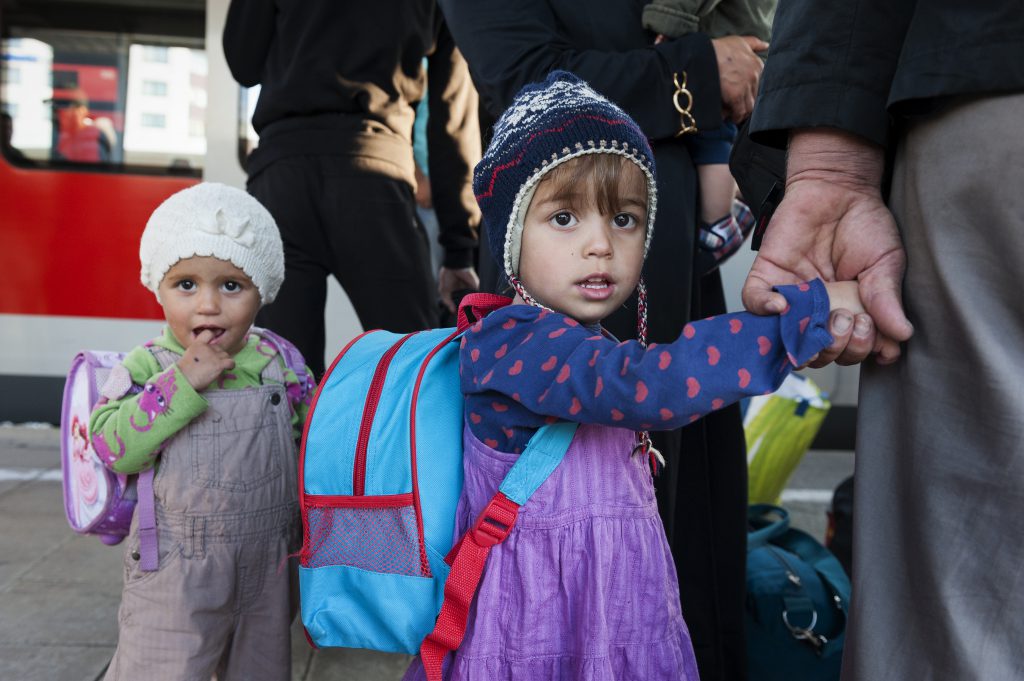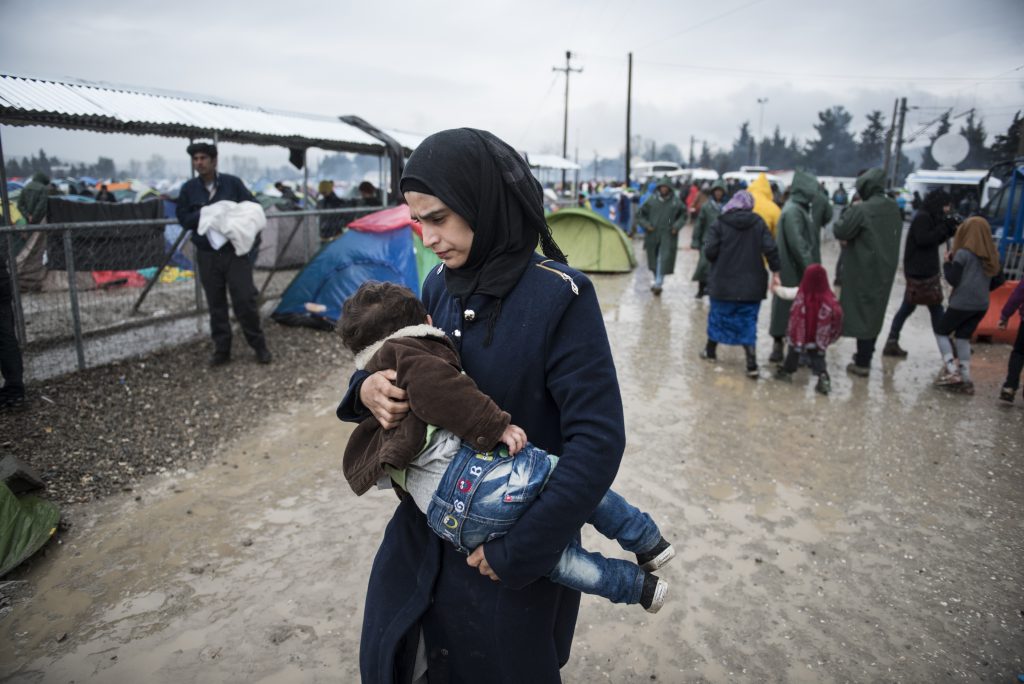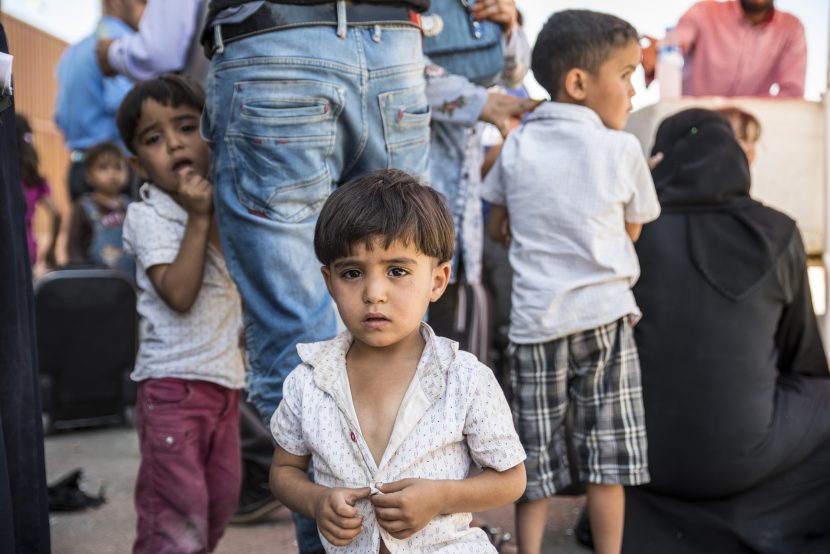Children in the displacement cycle experience the significant issues of invisibility in asylum procedures and the adult-focus of the migratory framework. In his research on “The Child in International Refugee Law”, Jason Pobjoy applies a three-folded principle of “the best interest of the child” to the context of migration – as an independent source of protection, a complementary source of protection, and a comprehensive, state-generated framework of rules (Pobjoy, 2017). This application demonstrates the potential of “the best interest of the child” principle to close the existing gaps and to provide age-sensitive protection for children in the displacement cycle, if states consent to implement the principle into International Refugee and Migrant Law.
“The Best Interest of the Child” as a Three-Folded Concept
Article 3 (1) Convention on the Rights of the Child (CRC) determines that “in all actions concerning children, whether undertaken by public or private social welfare institutions, courts of law, administrative authorities or legislative bodies, the best interests of the child shall be a primary consideration” (UNCRC, 1989). Therefore, it enshrines “the best interest of the child” principle and provides the basis for the three-folded concept. This three-folded concept constructs the principle as a substantive right, a rule of procedure and a fundamental, interpretative legal principle (Committee on the Rights of the Child, 2013).

In the context of migration, this principle could be analogously interpreted to be an independent source of protection, a complementary source of protection and a comprehensive, state-generated framework of rules (Pobjoy, 2017). These three approaches provide a distinct level of age-sensitivity and the potential to adequately close the aforementioned protection gaps of children in the displacement cycle.
“The Best Interest of the Child” Principle as a Comprehensive, State Generated Framework of Rules (Interpretative Aid)
In general terms, “the best interests of the child” principle applied as an interpretative aid is a norm-shaping approach and requires states to apply an age-sensitive and inclusive interpretation of the applied provisions (Hathaway, n.d.). An age-sensitive assessment does not refer to a mere differentiation between children and adults; it also requires an age-sensitive differentiation between children of different ages (Van Bueren, 1995) that is “consistent with the evolving capacities of the child” (Article 5 CRC).
Additionally, the age-sensitive assessment requires states to reconsider the qualification requirements for international protection and redefine them in a more age-sensitive manner. Children experience harm and risk in different ways and experience from the same objective risk a more severe form of harm, if compared to adults (Mubilanzila Mayeka and Kaniki Mitunga v Belgium, 2006). The form of harm suffered by a child can only be identified, if the interpretation of the conditions for international protection combines the perspective of “the best interests of the child” principle and the other substantive provisions in the CRC.
In practice this means that statements and evidence presented by a migrant child have to be considered following the evolving capacity of the child (Article 5 CRC) in an age-sensitive manner. Similarly, a different threshold for “irreparable harm” and a “real risk” for children has to be applied, and an assessment needs to be conducted in an age and gender-sensitive manner. sensitive This requires taking the unique vulnerability of children and their sensitivity into account in issues such as a risk of malnutrition, lack of education and health services (Committee on the Rights of the Child, 2005).
The principle as an interpretative aid provides for an age-sensitive interpretation and application of the migratory legal framework and has the potential to dissolve the prevailing adult-focus of the migratory framework. On the contrary, it is restricted to the substantive and material consideration of a state. From the three approaches, the interpretative aid-approach provides the lowest level of appropriate additional protection for a child in the displacement cycle as it mainly concerns the interpretation of substantive definitions rather than implying additional procedural obligations and safeguards that are child-specific. It, therefore, has a significant influence on the adult-focused interpretation and reading of principles and provisions of Migrant and Refugee Law but does not have the potential to dissolve the issue of the invisibility of the child.
“The Best Interest of the Child” Principle as a Complementary Source of Protection (Rule of Procedure)
The interpretation of the principle as a complementary source of protection provides an additional layer of procedural protection. This guarantees a procedural framework that includes age-sensitive procedural rules and helps to safeguard the protection and well-being of the child (McAdam, 2006). In the context of children in the displacement cycle, age-sensitive procedural rules in the perspective of the CRC refer to the implementation of appropriate legislative and administrative measures that guarantee to prevent potential harm to the well-being of the child (Article 4 CRC).

In practice this means that states are obliged to implement an age-sensitive individual assessment procedure of a child´s vulnerability. This entails that states are obliged to assess the general and individual circumstances of a displaced child (Committee on the Rights of the Child, 2005). This individual assessment has to be implemented as a procedure “which takes into account the needs of persons of his or her age” (Article 37 (c) CRC). This includes the assessment of the identity and age, as well as the protection needs and the individual circumstances of a child in an age-appropriate and gender-sensitive manner at the earliest point of the displacement cycle – at the border (Committee on the Rights of the Child, 2016).
The Committee on the Rights of the Child (CRC Committee) recommends the implementation of an individual assessment procedure, but grants states discretion in the implementation of such measures unless they contradict the object and purpose of the CRC and neglect the underlying obligations (Committee on the Rights of the Child, 2003). This includes the obligation to respect the right of the child to express his or her view and have this view taken in due consideration in compliance with the evolving capacities of the child (Committee on the Rights of the Child, 2005). Additionally, states can be held accountable as they are obliged to substantiate and prove the explicit consideration of “the best interests of the child” and how it has been respected in any decision concerning children (Committee on the Rights of the Child, 2013).
The application of “the best interests of the child” principle as a complementary source of protection provides for an additional age-sensitive layer of procedural rules that help to safeguard the interests of the child. It has the potential to improve the situation of the invisibility of children in the procedure of migration by creating the initial assessment of children in a more age-sensitive and participatory manner. On the contrary, it does not approach the adult-focused interpretation of the migratory framework as it is merely a rule of procedure.
This approach achieves a higher level of procedural protection for children and has to be considered more appropriate to encompass the special and unique vulnerability of a child. However, this goes along with an increasing invasive nature of this approach and might result in a lack of practical application and consensus by the Contracting States due to the voluntary nature of refugee and migrant protection.
“The Best Interest of the Child” Principle as an Independent Source of Protection
“The best interests of the child” principle, if applied as an independent source of protection, would establish an additional and independent category of protected persons – a safety net for children. If recognised in International Migrant and Refugee Law, it would create an intrinsic obligation for states, being directly applicable (self-executing) and being able to be invoked in court (Committee on the Rights of the Child, 2013).
The wide – almost universal – ratification of the CRC provides that more states are legally bound to its provisions. Therefore, “the best interests of the child” principle would introduce a source of protection for children as one of the most vulnerable groups of individuals that binds a high number of states. Additionally, the non-derogability and absolute nature of the principle provides for its applicability in situations in which protection such as the refugee protection deriving from the 1951 Refugee Convention is suspended. In addition to this, the existence of a supervisory body, the CRC Committee, creates the possibility to hold states accountable for their non-compliance with the obligations deriving from “the best interests of the child” principle and to effectively protect the child against all forms of harm as intended by the CRC.
Apart from that, some domestic jurisdictions such as Australia and New Zealand already base their assessment of the international protection status on “the best interests of the child” principle and implemented a child perspective with regards to the assessment of the need for international protection (Pobjoy, 2015) Other states including Sweden, Finland and Norway have developed a separate protection status for children to encompass the full range of the unique vulnerability of children (Pobjoy, 2015).
Children in the displacement cycle are still often considered as passive, voiceless and dependent individuals that appear to be invisible (Committee on the Rights of the Child, 2013). The establishment of “the best interest of the child” principle as an independent source of protection would therefore automatically move the child from this passive role to the intended active and independent role. “The best interests of the child” as a dynamic and flexible concept is highly feasible for the dynamic challenges of the globalised community and takes child-specific issues in migration into focus.

One of the identified challenges for children in the displacement cycle is the adult perspective that neglects child-specific origin and forms of persecution, risk of harm and other migratory definitions. Only the proactive nature of the state obligations enshrined in “the best interests of the child” principle has the potential to fully acknowledge the particular vulnerability of children, to identify the children in need of such and to involve the child in this process (Ye v Minister of Immigration, 2009).
As a general principle of the CRC, it has to be read in conjunction with all provisions entailed in the CRC and therefore provides for a comprehensive set of civil, political, economic and social rights for migrant children falling within the scope of the independent protection of Article 3 (1) CRC – “the best interests of the child”. The CRC is described as “a valuable frame […] for any consideration of asylum issues as they affect children” and provides “perhaps the most exacting standards for protection and assistance to children under any international instrument” (Feller, 2001).
The application of “the best interests of the child” principle as an independent source of protection is of norm-producing character which provides for a scope of protection for children that is more extensive than the existing protection regimes. It has the potential to abolish both the invisibility of a child in migration procedures and the adult-focused interpretation of the migration framework.
All three application concepts of “the best interest of the child” principle would add a degree of age-sensitivity to the existing International Migrant and Refugee Framework. The principle applied as an independent source of protection provides the highest degree of feasibility to fill the existing gaps of invisibility and adult focus in an age-sensitive manner. Alternatively, it can be recommended to combine the interpretative and procedural application of the principle to inform the existing Migrant and Refugee Framework to include an age-sensitive procedure and interpretation of provisions in the assessment of international protection.
On the contrary, the inclusion of “the best interest of the child” principle as an independent source of protection, a complementary source of protection and a comprehensive, state generated framework of rules into the international protection regime faces substantive challenges. One of the prevailing challenges is the lack of state consent since states only reluctantly opt to extend the traditional refugee or migration protection as it goes along with surrendering parts of state sovereignty.
Let’s Act Now
Despite a quasi-universal recognition of children´s rights and the child as an individual rights bearer in the UN Convention on the Right of the Child, the implementation and recognition thereof in the intersection of Children´s Rights Law and Refugee and Migrant Law has still a long way ahead. States have to extend the existing International Refugee and Migrant Framework to ensure an effective and age-appropriate protection of migrant children.

Humanium, as a member of Child Rights Connect, the organization that drafted the UN Convention on the Rights of the Child, strongly engages in protecting vulnerable children worldwide. Humanium works for a world where children´s rights are universally and effectively respected, protected and enforced in all circumstances involving a child. You can help raise awareness on children’s issue in the world by supporting Humanium – through sponsoring a child, making a donation, becoming a member or a volunteer.
Written by Alexander Weihrauch
For more information:
Pobjoy, J. (2017),” The Child in International Refugee Law”, Cambridge Asylum and Migration Studies.
Pobjoy, J. (April 2015), “The best interests of the child principle as an independent source of international protection”, ICLQ vol 64.
Bibliography:
1989 United Nations Convention on the Rights of the Child
Feller, E. (1 March 2001), Statement delivered to the EU Seminar on Children affected by Armed Conflict and Displacement in Sweden, in: Pobjoy, J. (April 2015), “The best interests of the child principle as an independent source of international protection”, ICLQ vol 64., p. 363.
Hathaway, J.(n.d.), acknowledged in: Pobjoy, J. (April 2015), “The best interests of the child principle as an independent source of international protection”, ICLQ vol 64.
McAdam, J, “Complementary Protection in International Refugee Law”, Oxford University Press, 2006, 173 in: Pobjoy, J. (April 2015), “The best interests of the child principle as an independent source of international protection”, ICLQ vol 64., p. 334.
Pobjoy, J. (2017),” The Child in International Refugee Law”, Cambridge Asylum and Migration Studies
Pobjoy, J. (April 2015), “The best interests of the child principle as an independent source of international protection”, ICLQ vol 64.
Van Bueren, G (1995), “Opening Pandora’s Box: Protecting Children against Torture or Cruel, Inhuman and Degrading Treatment or Punishment”, 17 Law and Policy 378, 385.
Ye v Minister of Immigration (2009), NZSC 76, para. 50, in: Pobjoy, J. (April 2015), “The best interests of the child principle as an independent source of international protection”, ICLQ vol 64., p. 345.


